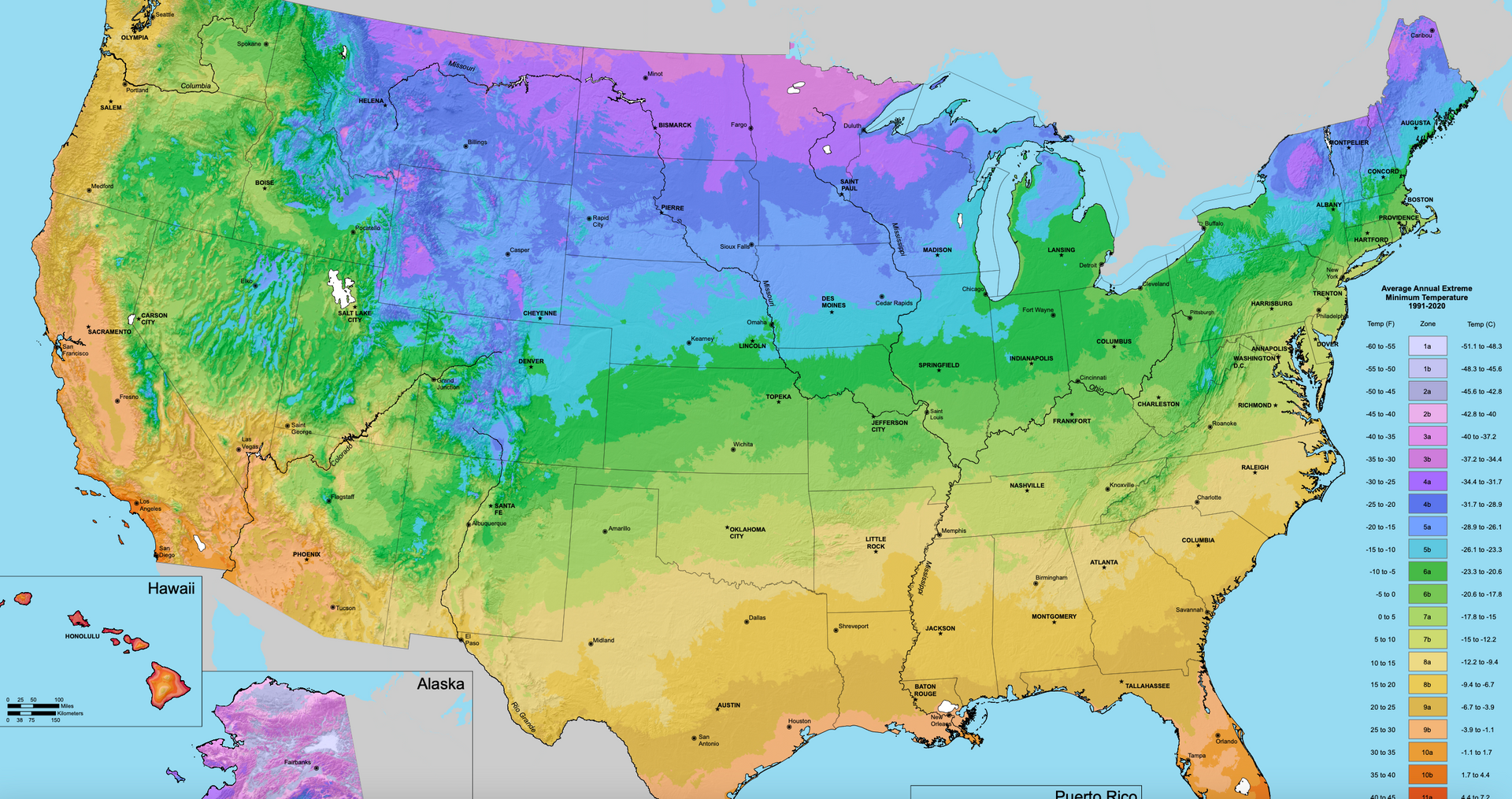New Resident Gardening Tips: What the USDA Hardiness Zone Map Says About Asheville
Understanding the USDA Hardiness Zone Map

Moving to a new place comes with its own set of challenges, and if you’re a gardening enthusiast, understanding the local climate is crucial. Asheville, North Carolina, is a unique spot with a rich history and a climate that supports a diverse range of plant life. Whether you’re new to gardening or a seasoned green thumb, understanding the USDA Hardiness Zone Map can help you make the most of your new garden in Asheville.
Understanding Asheville's place on the USDA Hardiness Zone Map
The USDA Hardiness Zone Map is a tool that gardeners use to determine which plants are most likely to thrive at a specific location. The map divides North America into 13 zones based on the average annual minimum winter temperature. Each zone represents a 10-degree Fahrenheit range. Asheville falls within Zone 7a and 7b, where the average minimum winter temperature ranges from 0 to 10 degrees Fahrenheit.
What Plants Can You Grow in Asheville?
Asheville’s location in Zone 7a and 7b opens up a wide variety of options for your garden. Here are some plants that are well-suited to this region:
Perennials
- Black-Eyed Susan (Rudbeckia hirta): These cheerful, daisy-like flowers are hardy and can brighten up any garden.
- Hostas: Known for their lush foliage, hostas are a shade garden favorite and thrive in Asheville’s climate.
- Echinacea (Coneflower): A resilient plant that attracts pollinators, echinacea adds both beauty and ecological value to your garden.
Shrubs and Trees
- Rhododendrons and Azaleas: These shrubs are a staple in many Asheville gardens, known for their vibrant blooms in spring.
- Dogwood (Cornus florida): This native tree offers stunning flowers in spring and beautiful red foliage in the fall.
- Hydrangeas: Known for their large, colorful flower heads, hydrangeas can add a touch of elegance to your garden.
Vegetables and Herbs
- Tomatoes: A summer favorite, tomatoes thrive in the warm, sunny conditions of Asheville.
- Kale and Spinach: These leafy greens grow well in the cooler months of spring and fall.
- Basil and Thyme: These herbs are not only useful in the kitchen but also easy to grow in Asheville’s climate.
Fruits
- Blueberries: Asheville’s acidic soil is perfect for growing blueberries, which can provide delicious fruit and attractive foliage.
- Apples: Many varieties of apples can thrive in Asheville, especially those that require a cold winter to set fruit.
- Strawberries: These are easy to grow and can provide a bountiful harvest in the late spring and early summer.
Tips for Successful Gardening in Asheville
- Soil Preparation: Asheville’s soil can vary, but it often benefits from the addition of organic matter. Compost and well-rotted manure can improve soil structure and fertility.
- Mulching: Mulch helps retain moisture, suppress weeds, and regulate soil temperature. Organic mulches like wood chips or straw are excellent choices.
- Watering: While Asheville receives a good amount of rainfall, it’s important to monitor soil moisture, especially during dry spells. Deep, infrequent watering encourages deep root growth.
- Pest Management: Keep an eye out for common garden pests and use integrated pest management techniques to keep them under control without harming beneficial insects.
Conclusion
Gardening in Asheville can be a rewarding experience, thanks to its favorable climate and diverse plant options. By understanding the USDA Hardiness Zone Map and selecting plants suited to Zone 7a and 7b, you can create a thriving garden that brings beauty and joy to your new home. Whether you’re planting perennials, shrubs, vegetables, or fruits, Asheville offers the perfect environment to cultivate your gardening dreams.
Welcome to Asheville, and happy gardening!









